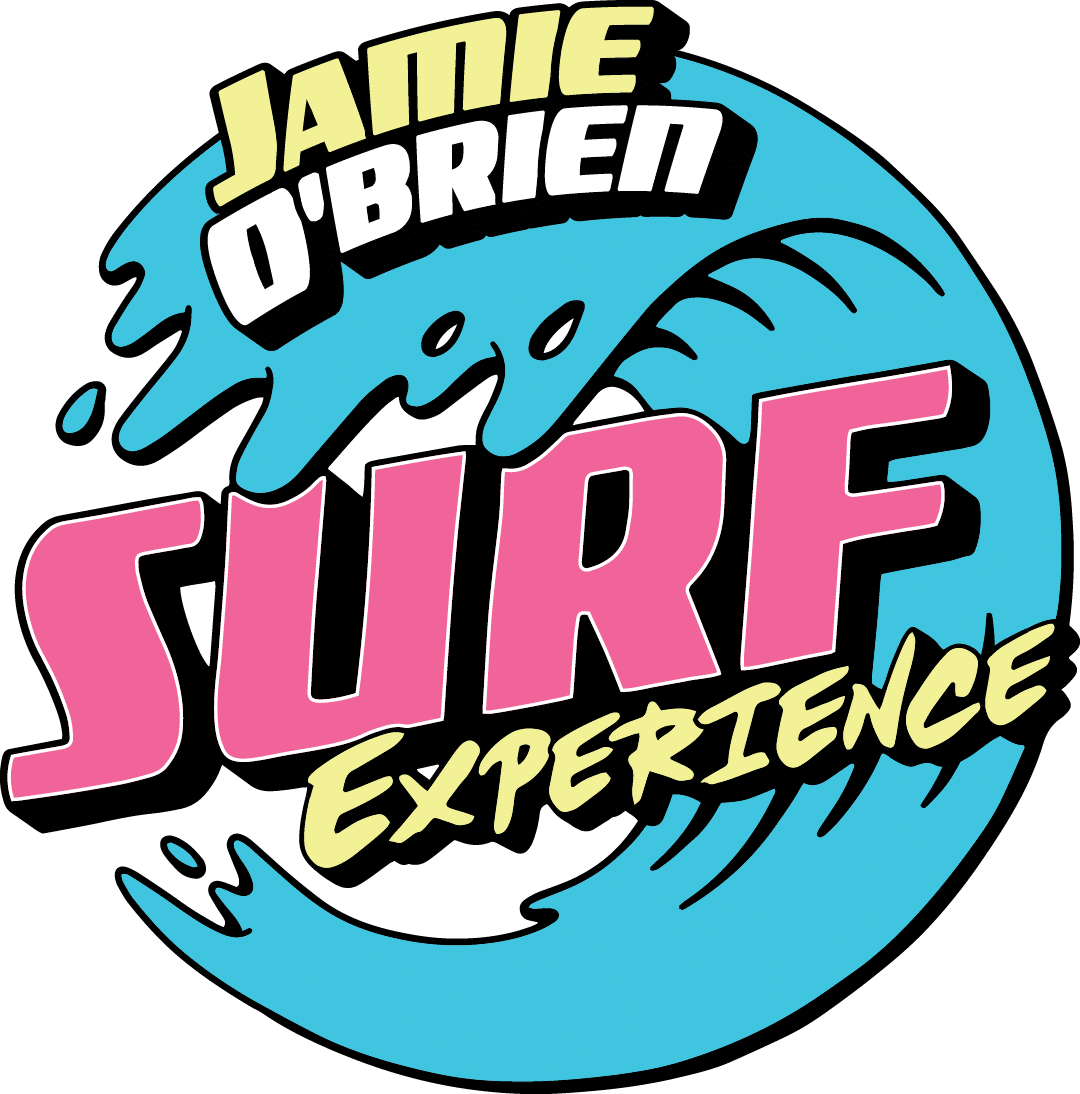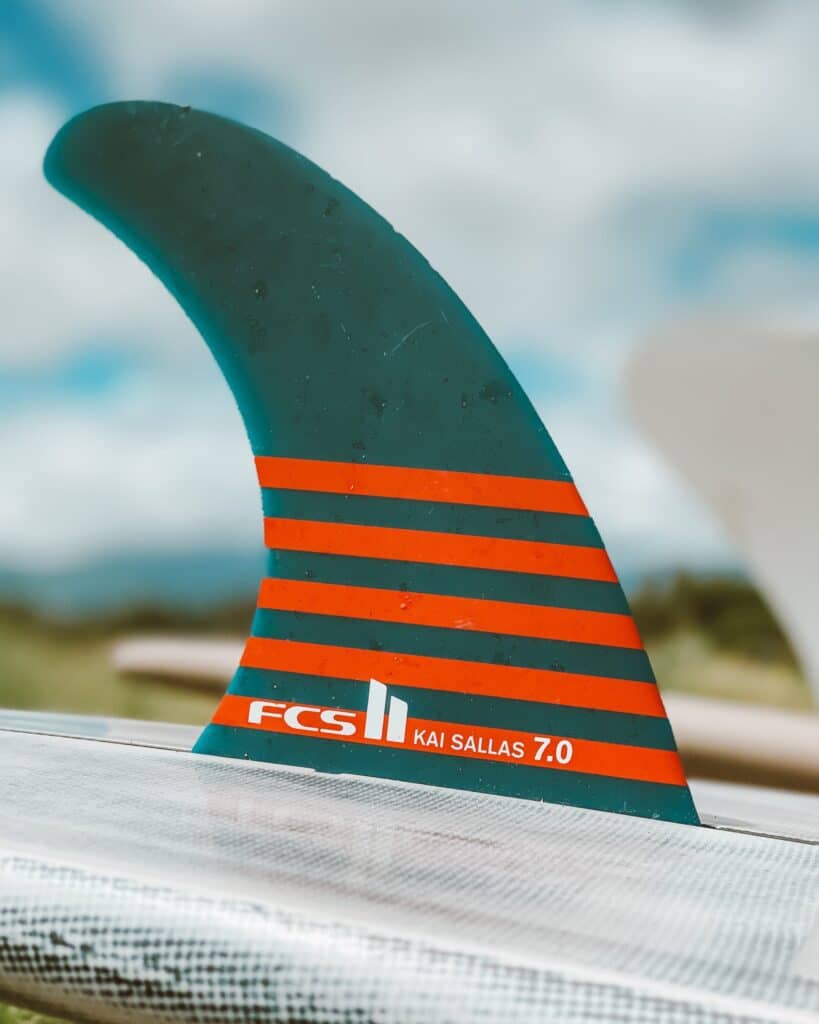
If you’ve ever experimented with alternative shapes and fin setups, you know how drastically different one fin set up can ride verse another, even in the same board. For decades, surfers only rode single fins. The single fin itself went through several iterations before its modern variations. The first surfboards were finless and solid wood. Tom Blake, who created the first hollow surfboard in 1929, also manufactured the first surfboard fin when he added a small 10-foot long, 4-inch deep skeg from a small speedboat to the tail of his surfboard in 1935. Later in 1948, Joe Quigg and Bob Simons experimented with polyurethane foam-core boards and fiberglass fins. For the better part of the next two decades, surfboard shapes and materials were refined further. Removable fins were introduced in the 1950s. In the 1960s, Bob Simmons invented the twin fin. In 1981, Simon Anderson debuted the thruster (three fins) and took high-performance surfing to new heights. Shortly after, Australia’s Glen Winton popularized the quad-fin. In today’s modern surfing age, shapers and surfers are revisiting older surfboard fin setups and modernizing their approach to twin fin and single fin designs, while continuing to push performance surfing with thruster and quad designs.
Surfboard Fin Set-Ups
Single Fin
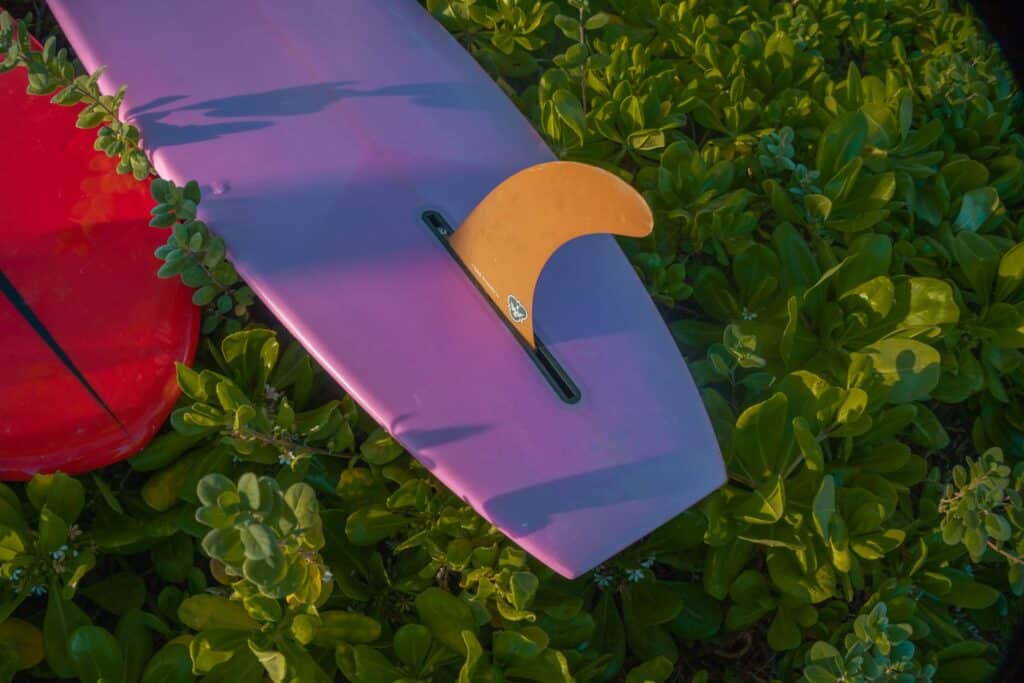
As we mentioned above, single fins dominated the twentieth century. Even with the introduction of twin fins in the 1960s, single fins remained the more popular fin choice until the late 1960s and early 1970s, when the shortboard revolution began to gain traction and surfboard fins evolved to meet higher performance standards. Still, single fins were a popular model for shortboards and longboards until the thruster made surfers rethink what was possible in high-performance surfing. Today, single fins are mostly associated with longboards apart from a few retro models. Single fins have far less maneuverability than other fin setups, but they make up for it with loads of drive and hold.
Twin Fin
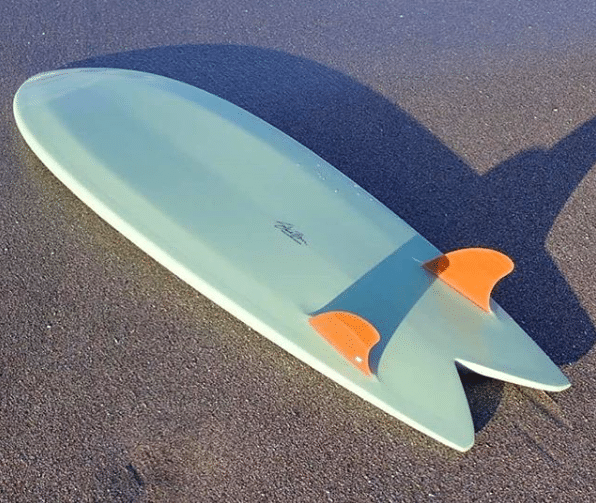
Twin fins are having a resurgence in popularity thanks in part to a few retired pros like Josh Kerr, who have given up their thrusters in favor of the speedy high-performance twin. Twin fins are popular options for smaller, weaker surf or longer, point break style waves. Unlike thrusters, twin fins have tons of drive and speed but lack the turn on a dime ability many surfers are used to with three and four fin set-ups. Instead, twin fins can feel loose and skatey. They are great for wide, carving turns. Modern tale shapes have helped bridge the performance gap between twin fins and thrusters. Additionally, many modern twins come with a third fin box meant for a tiny trailer fin that adds just enough turning power to the fun and loose surfboard fin setup.
Thruster
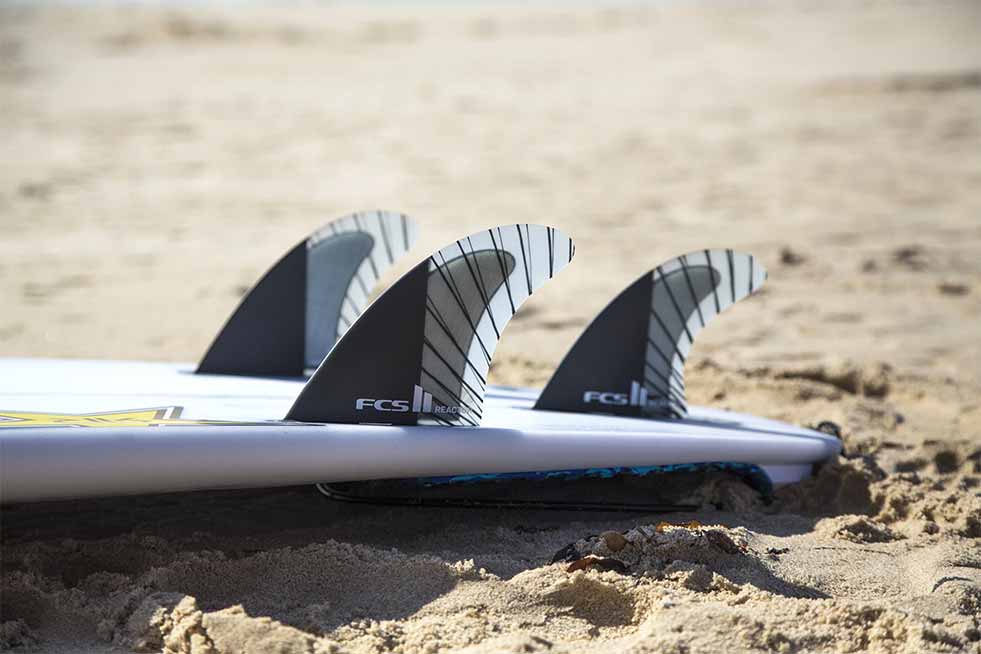
Thrusters represent the pinnacle of performance surfing. The three-fin surfboard fin setup allows surfers to ride in the pocket and turn sharply up the wave’s face. Thrusters hold better than twins in large surf but offer release at the top of the wave where it’s needed. Unlike twins and single fins, thrusters lack drive and must be pumped heavily to generate speed through slower sections of the wave.
Quad
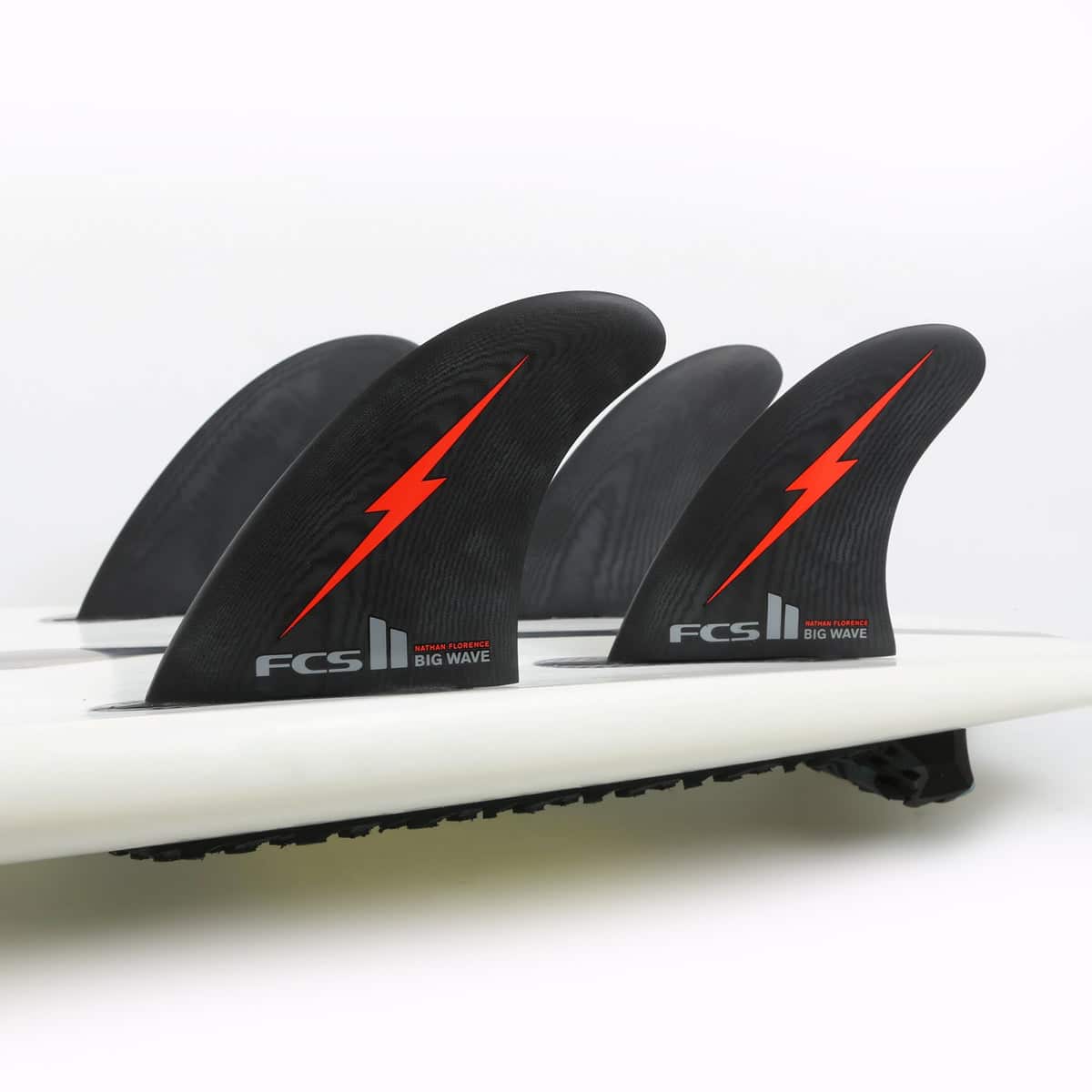
Quads are a modern adaptation of the twin fin concept that no center fin reduces drag and increases speed. Like twin fins, four fin set-ups offer more drive and speed than their thruster counterparts. Unlike a twin fin, quads have a similar turning radius and ability to perform in the pocket to thrusters. Quads are often preferred in weaker surf or for barrel riding because of their added drive.
Two plus one
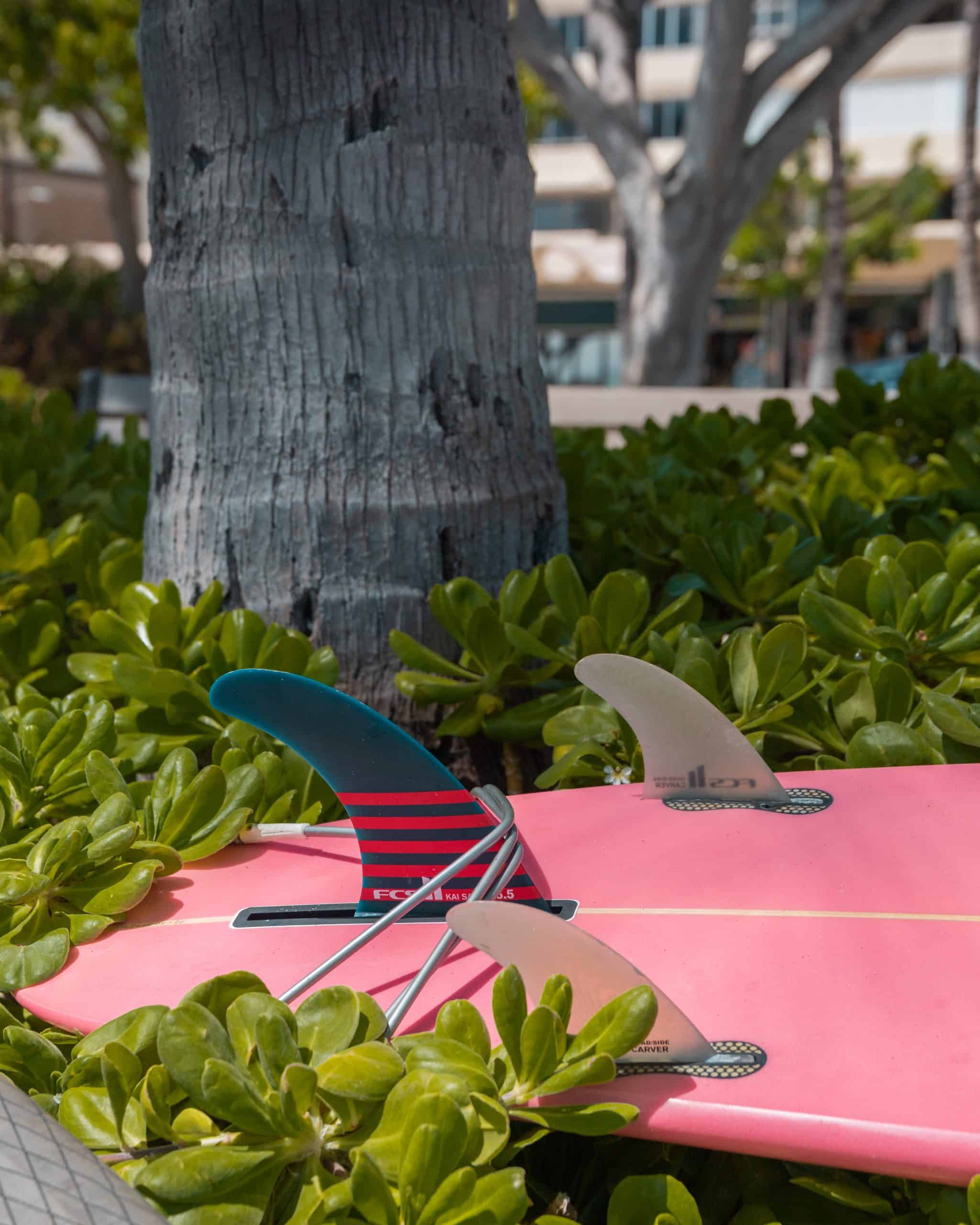
As we mentioned above, single fins have limited mobility and release. To remedy this issue, most modern longboarders choose to run a two plus one setup. A two plus one setup involves a large single center fin with two smaller side bites. The side bites give the board more maneuverability than a traditional single fin.
Experimenting with and mastering different surfboard fin setups is a critical part of the learning process and helps you become a more well-rounded surfer. Learning how to maneuver a board no matter its shape, size, or fin setup gives you the muscle memory and know-how to perform turns in critical situations. On our guided North Shore Surf Experience, our seasoned surf guides will take you to the best waves for whatever setup you’re riding. If you’re new to surfing and visiting Hawaii, make sure to book your North Shore surf lesson to learn from the best in the business. Book your stay at Turtle Bay Resort to stay close to the action on Oahu’s North Shore.
